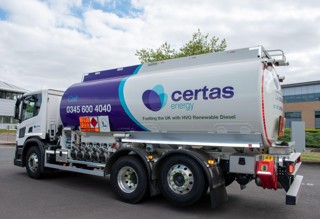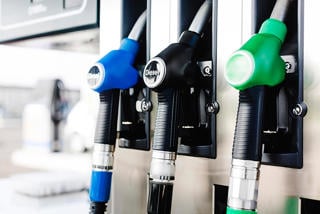There are good reasons for fleets to use vans running on compressed or liquefied natural gas (CNG/LNG). However, so far, British fleets have yet to be convinced and the market is tiny, but there are signs it is growing.
Natural gas vehicles (NGVs) reduce environmentally harmful emissions and have lower equivalent fuel costs than petrol or diesel and lower maintenance costs, since natural gas burns so cleanly. And major European manufacturers make them – notably Fiat.
Yet the UK is a particularly barren region for NGVs, with just an estimated 220 NGVs in the country: 20 of which are classified as commercial vehicles and 150 as heavy duty trucks, according to the Natural Gas Vehicles Association (NGVA Europe).
Although there has been movement this year and these figures are increasing, a key problem limiting progress is a lack of refuelling infrastructure. Today, there are only about 10 natural gas refuelling stations in Britain, according to Jon Stokes, product manager at commercial vehicle manufacturer Iveco. He said the UK was a European NGV pioneer in the late 1990s, with about 20 filling stations across the country, mostly centred around London. About 100 fleet vans were on the roads, mostly in London, as well as some minibuses and refuse collectors, Stokes said. However, government assistance, such as incentives to buy NGVs, plus exemptions for low-carbon fleets from London congestion charges, have since ended and stations have gradually disappeared.
As a result, automobile manufacturers such as Fiat, known advocates for NGVs and a European leader in manufacturing low-emission vehicles, are currently not developing natural gas vehicles specifically for the British fleet market.
Tom Johnston, Fiat UK. “It looks like it may be a chicken and egg case, where the infrastructure doesn’t exist because there aren’t the vehicles for it, and vice-versa.”
Brian Madderson, chairman of the Retail Motor Industry Federation’s (RMIF) petrol division, added that the UK has no indigenous supply of compressed natural gas (CNG), and import duty reductions are “insignificant, thus failing to make it a more attractive option than unleaded or diesel.” Madderson also pointed out that there are “significant health and safety implications for storing, transporting and supplying CNG/LPG (liquefied petroleum gas)”.
Association of Car Fleet Operators (ACFO) director Stewart Whyte was also pessimistic, seeing natural gas vans and cars being introduced in “tiny, tiny numbers” into British fleets.
“CNG/LNG is certainly a road fuel that has had; has and is likely to continue to have only a very small niche part to play in UK car and van fleets…,” said Whyte.
He highlighted NGVs’ being less roomy than petrol vehicles, with bulky fuel storage cylinders taking up precious space. Another disadvantage, Whyte said, is the limited driving range of NGVs, typically about half that of a petrol or diesel powered vehicle.
Ian Featherstone, fleet advice manager at Energy Saving Trust, added that another barrier is the heavier gas tanks that CNG vehicles, for example, require.
“If a commercial vehicle loses 150 kilos of payload because of their big, heavy tanks, then it makes that vehicle less cost-effective,” he said.
Featherstone explained that in other parts of Europe, there are certain payload allowances made for natural gas vehicles that do not exist in the UK.
“Right now, diesel is cost effective and meeting emission standards – NGVs would have to be half the price to compete,” Featherstone said.
So is it really worth even considering buying natural gas vans? Yes said Stokes, and he said British pioneers are having a go.
One incentive is biomethane programmes from landfills, now completing successful trial runs.
Gasrec, the first commercial producer of liquid biomethane in Europe has been gaining popularity with several well-known UK delivery services such as Waitrose, Sainsbury and Tesco, using its fuel.
Last year, Sainsbury converted its fleet of diesel heavy goods vehicles into trucks with dual fuel engines using diesel and biomethane produced from landfill biogas, and this past August, Tesco commissioned 25 Iveco ECODaily light commercial vehicles fuelled by sustainable liquid biomethane.
Indeed, Tesco is using an Iveco speciality van for its door-to-door grocery deliveries. The four-tonne vehicle is much like a regular fleet van, but has a refrigerated interior and special shelves easing loading and deliveries. Stokes said this kind of low-carbon delivery method is important for UK companies having to prove they have lowered their carbon footprint, or potentially face a financial penalty. He is confident that Tesco’s choice will convince smaller companies to switch to NG vans for their urban deliveries, too. “If companies see that these trendsetters can do it, other companies will say ‘we can, too’,” Stokes said. “(Fleets) are starting to see the benefits of natural gas.”
EUROPEAN STATISTICS
Europe has around 1.3 million natural gas vehicles (NGV) on its roads, and more than 3,500 refuelling stations. Italy is by far the largest European NGV market, with just shy of 700,000 commercial vehicles, and other large markets include the Ukraine, with more than 200,000 vehicles, and Russia and Armenia, each with over 100,000. But vast regions of the continent are basically NGV deserts – with no refuelling stations, and no NGV fleets to demand them. The traditionally ‘green’ Scandinavian countries are far behind: Sweden has less than 30,000 NG vehicles, Norway only 500, and zero in Denmark. Other environmentally savvy countries are also lagging: the Netherlands has only 3,500, and Switzerland less than 10,000.
WHERE DOES THE FUEL COME FROM?
Natural gas vehicle engines mainly burn methane and this helps reduce global warming given the methane produced within landfills has a greenhouse gas effect 21 times stronger than CO2. Manufacturers such as Fiat have been eagerly introducing low-carbon models into the European market as an alternative to petrol and diesel vehicles. The gas is either fossil ‘natural gas’ or ‘biomethane’ produced from renewable resources (waste sludge as landfill gas and biological waste as biogas). Annually, Britain landfills 100 million tonnes of waste - one tonne of biodegradable waste produces between 200m3 and 400m3 of landfill gas, of which half is typically methane.



















Lynn Jones - 26/09/2012 16:01
We are a company of gas lamp engineers refurbishing old gas lamps in Malvern, Worcestershire. We are looking to buy a small canister of compressed methane / natural gas. Would you ?be able to advise us>